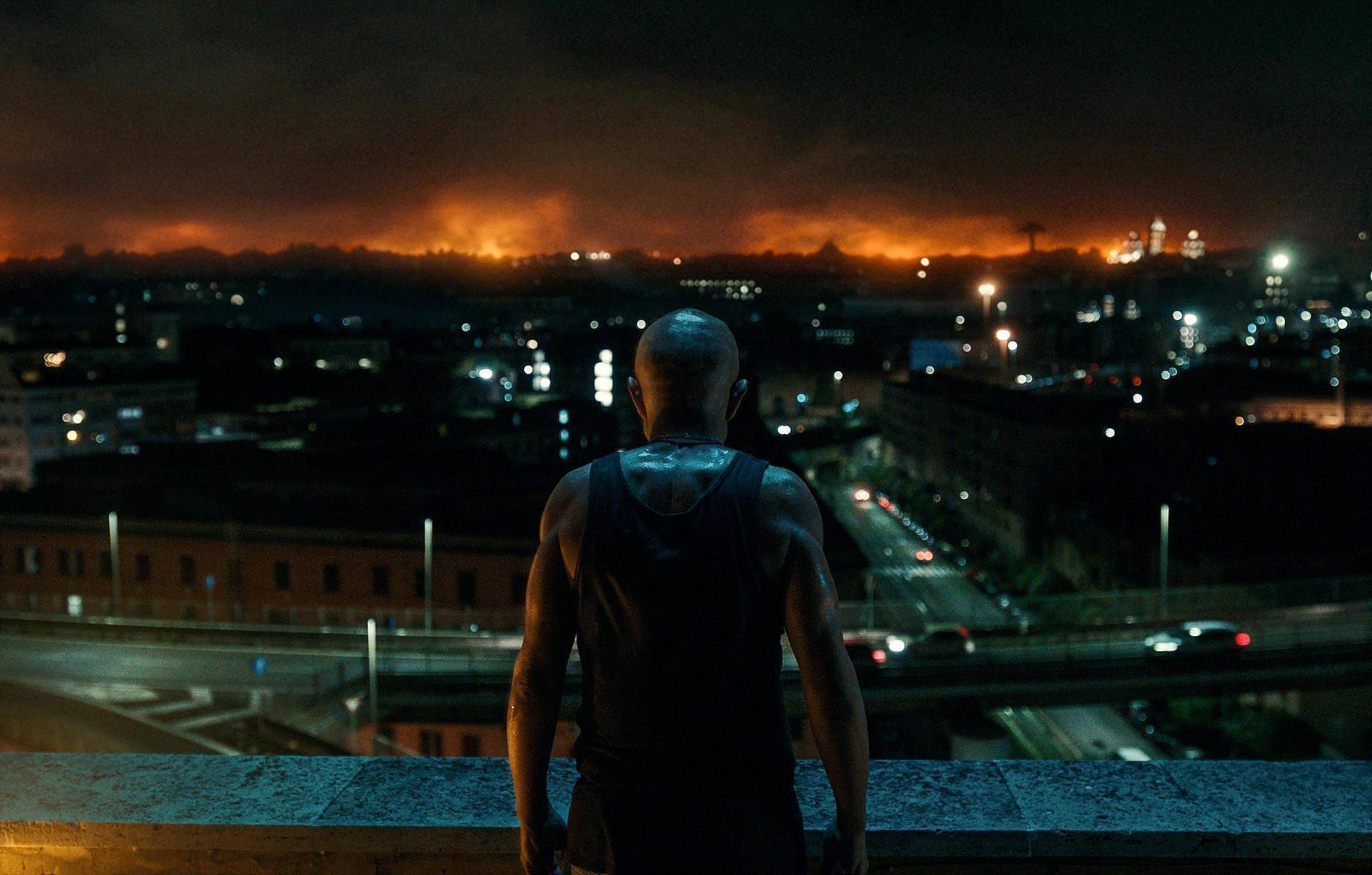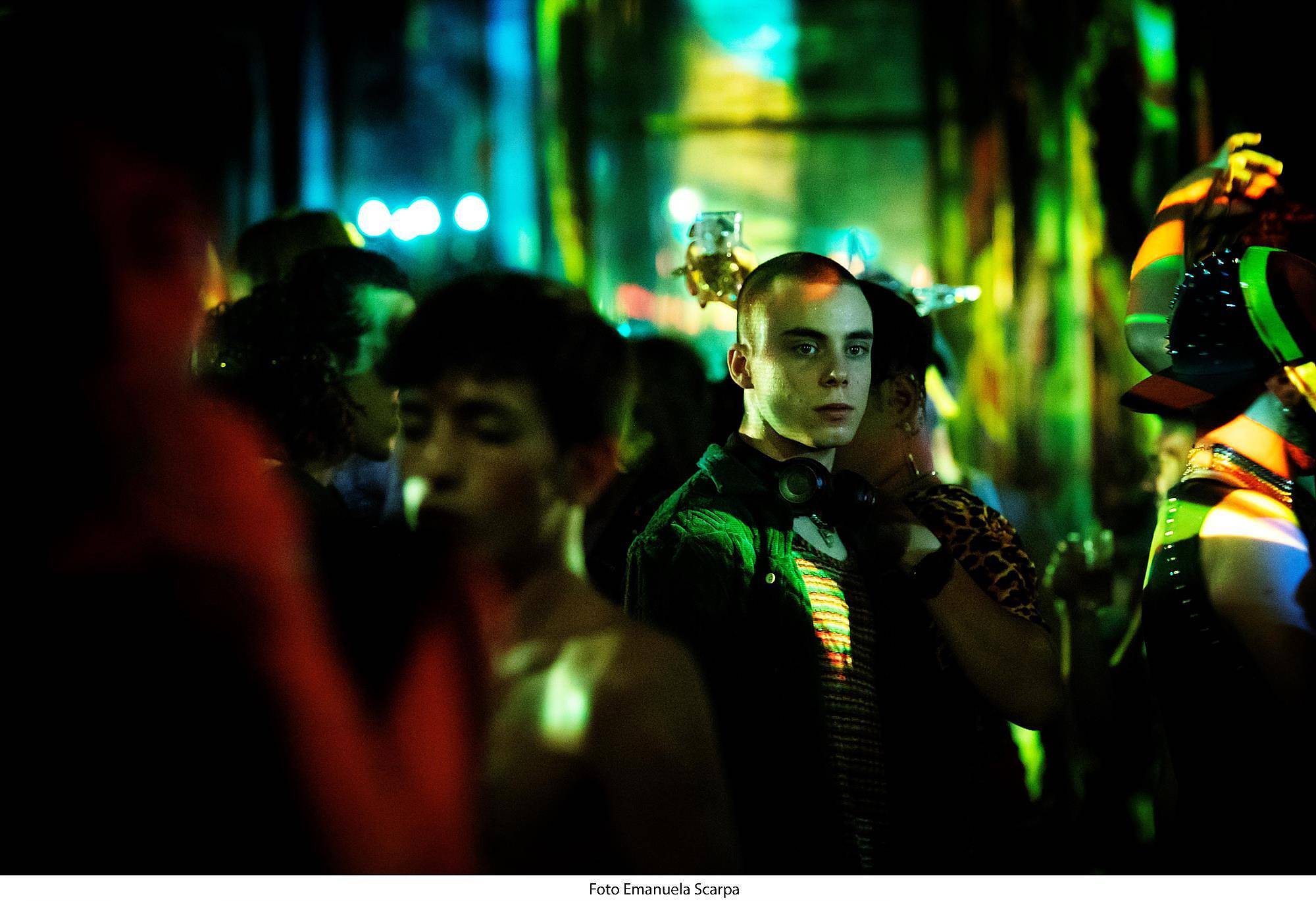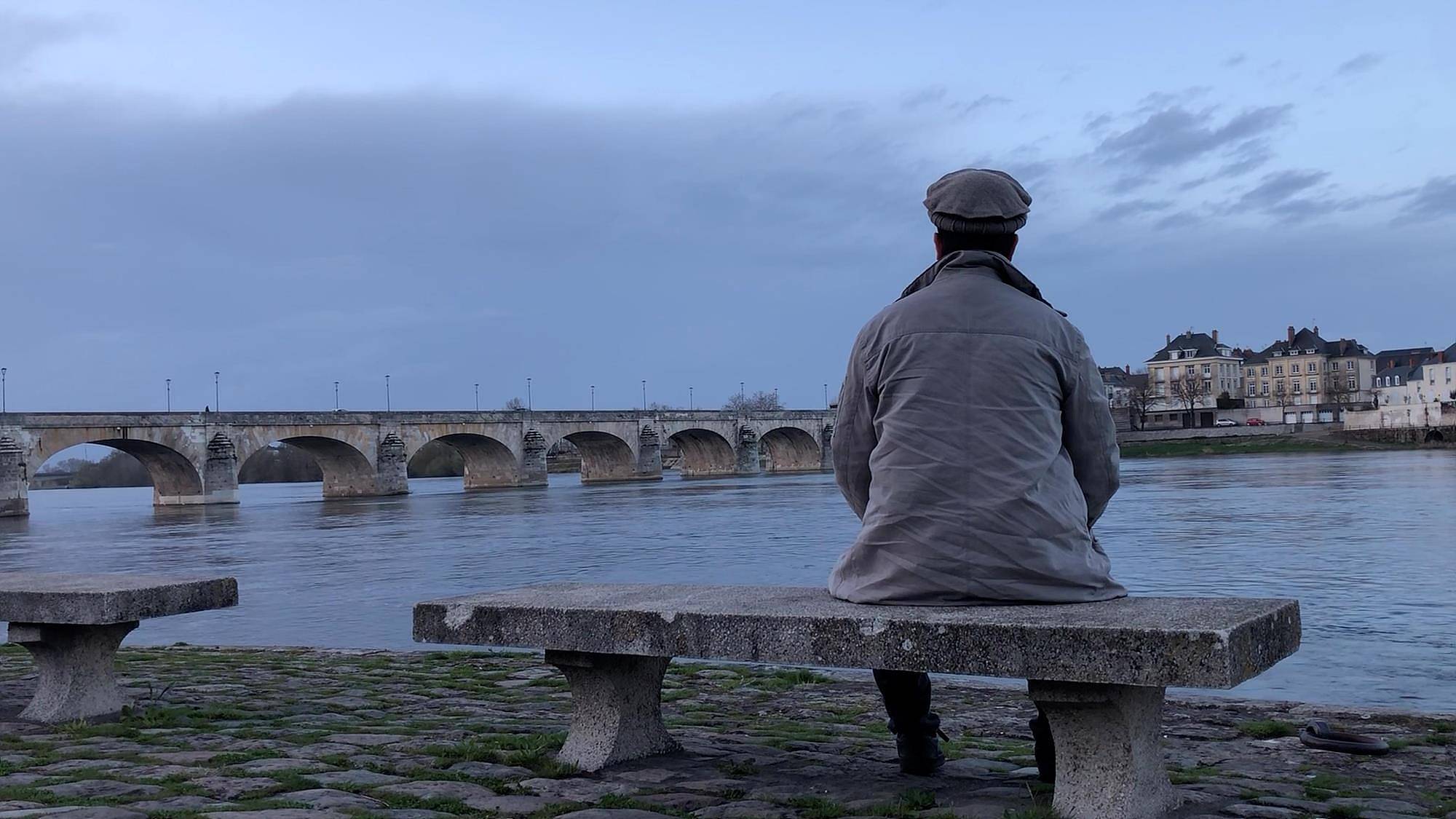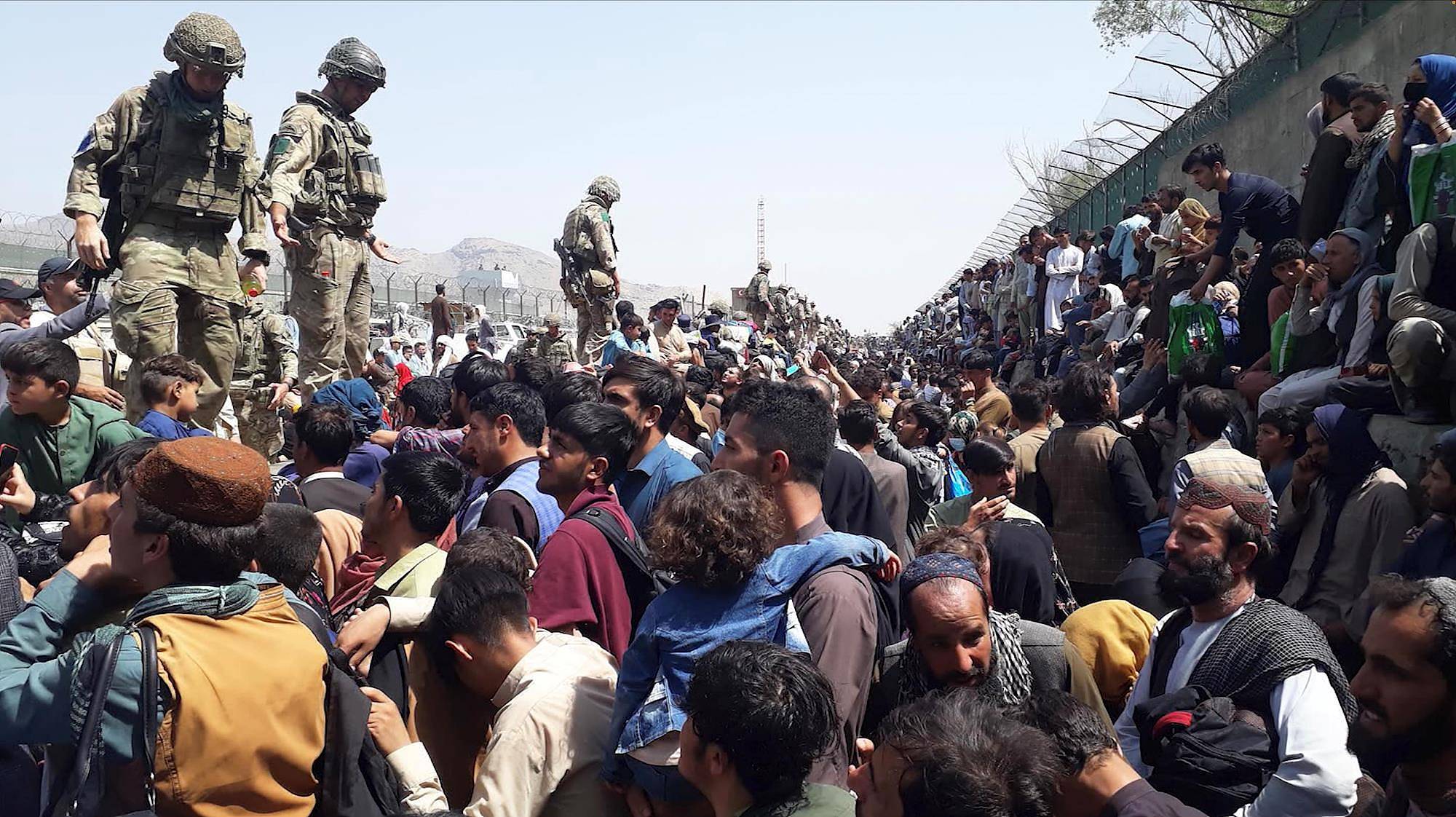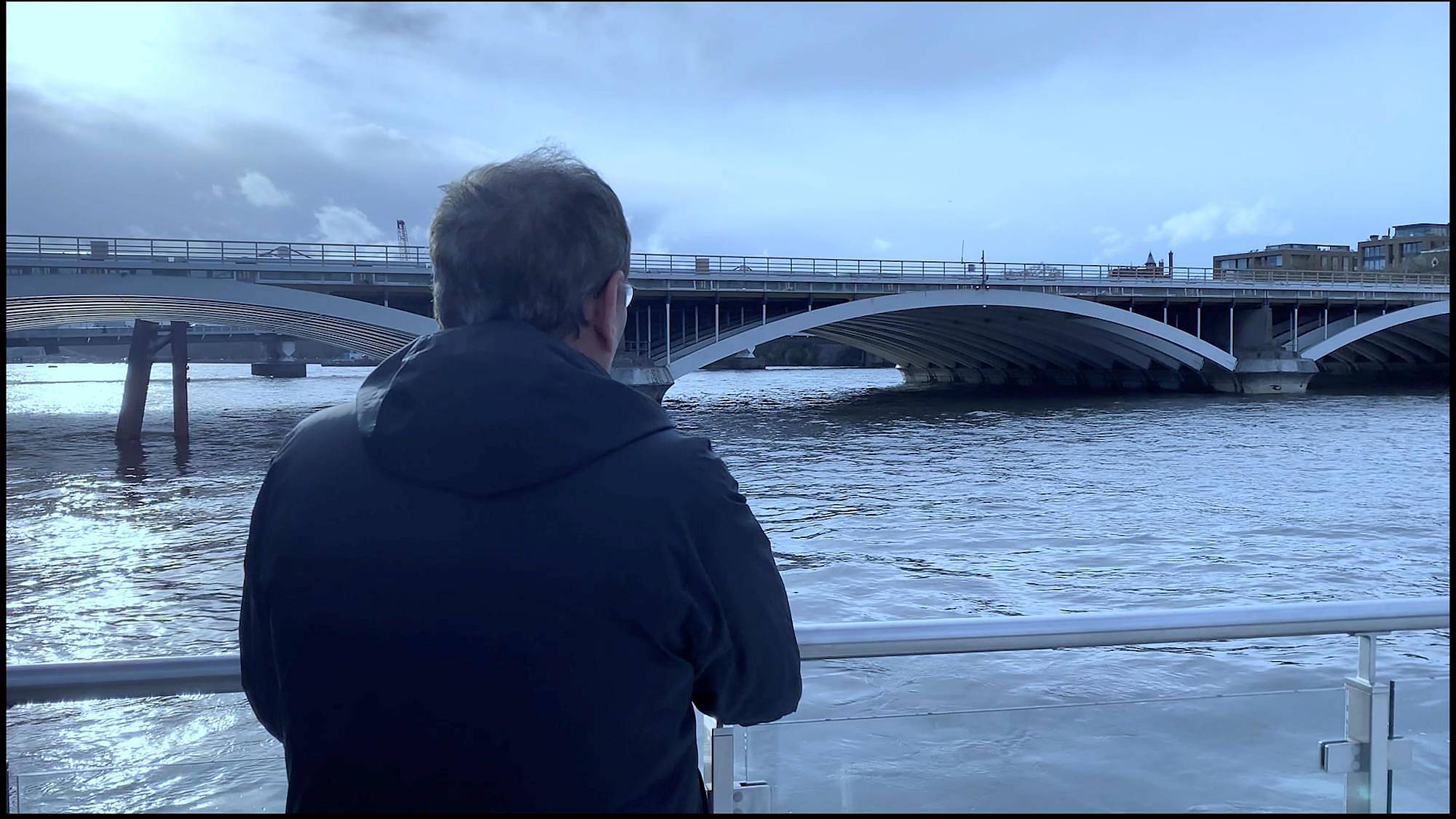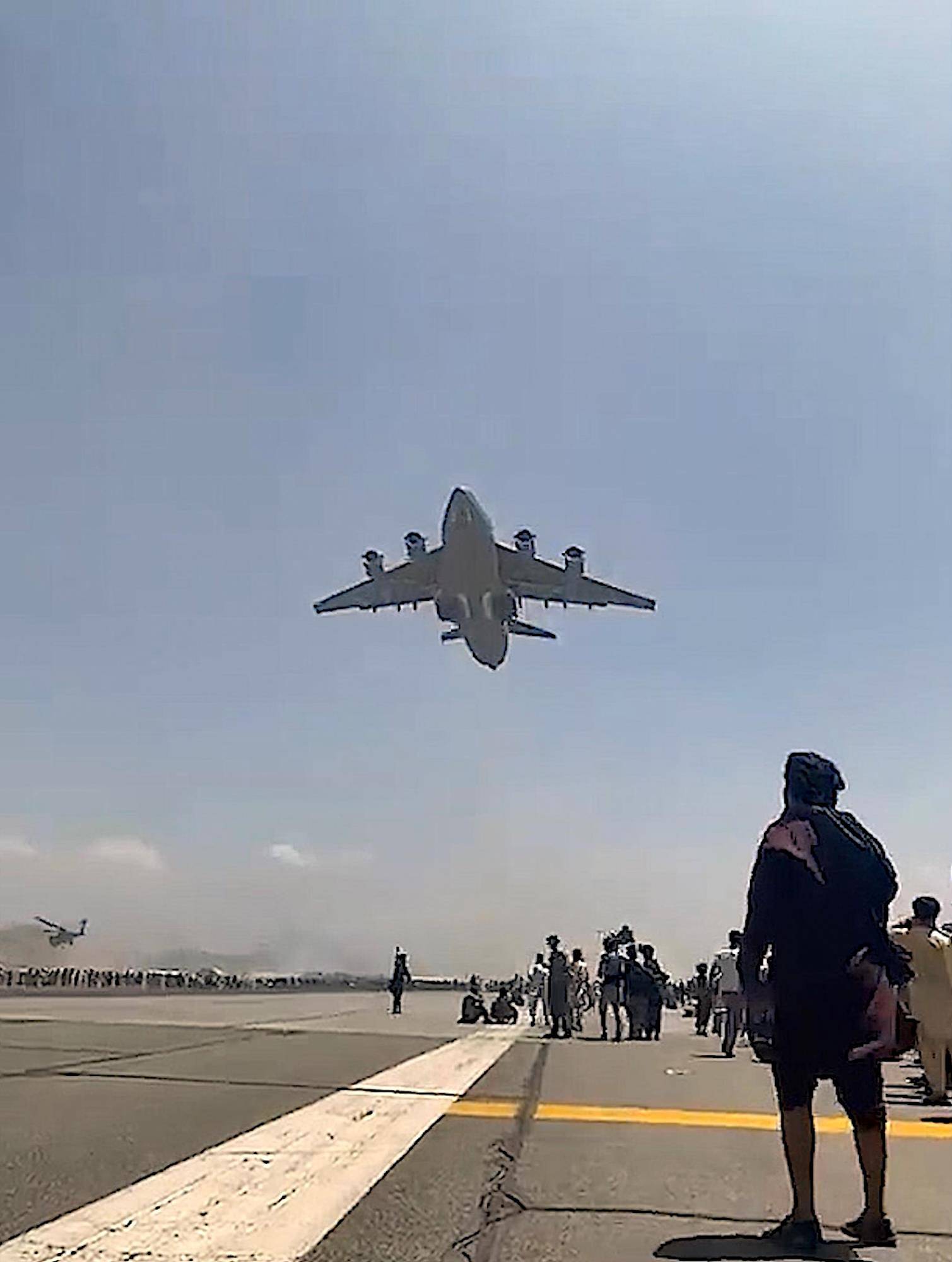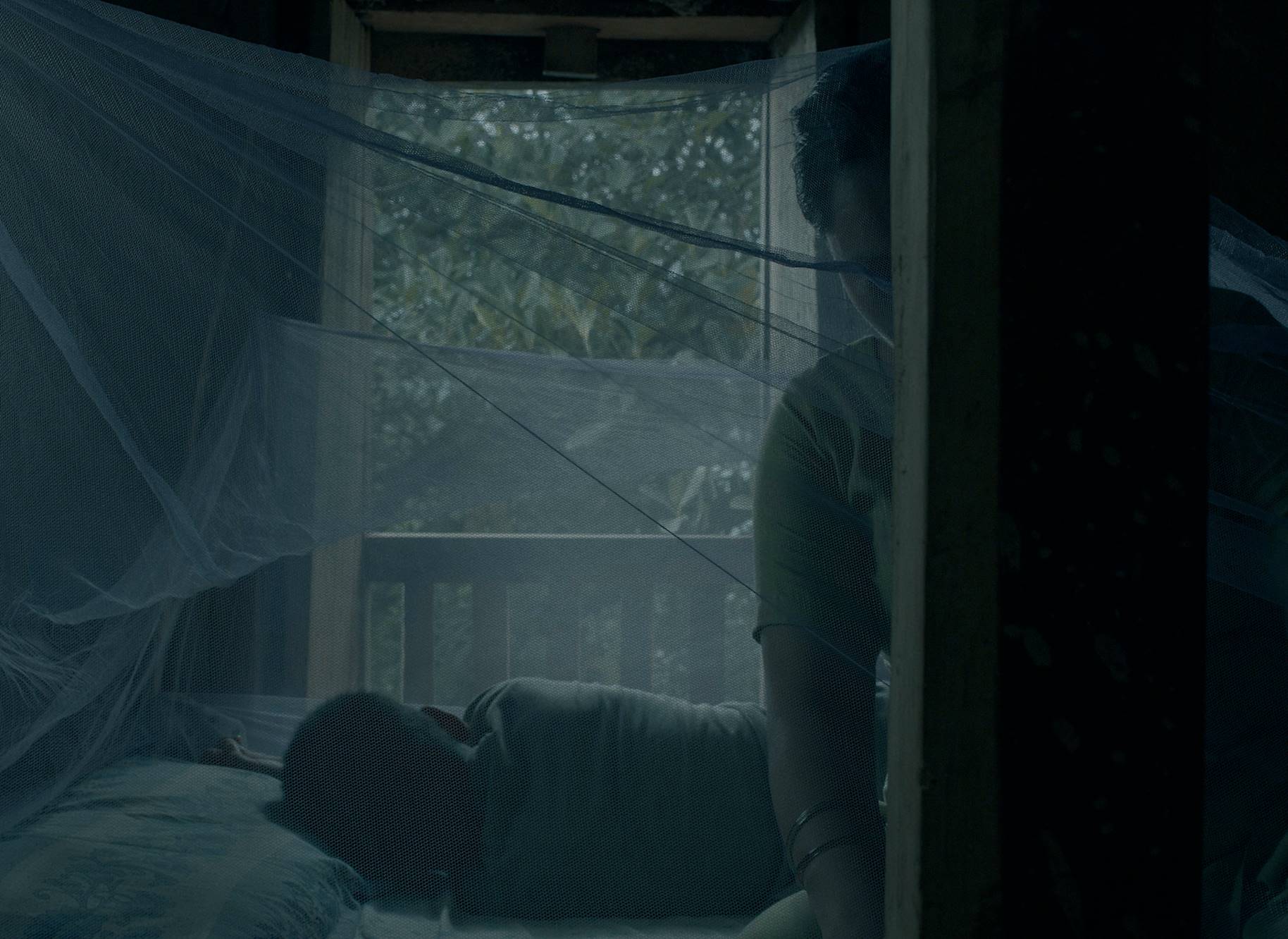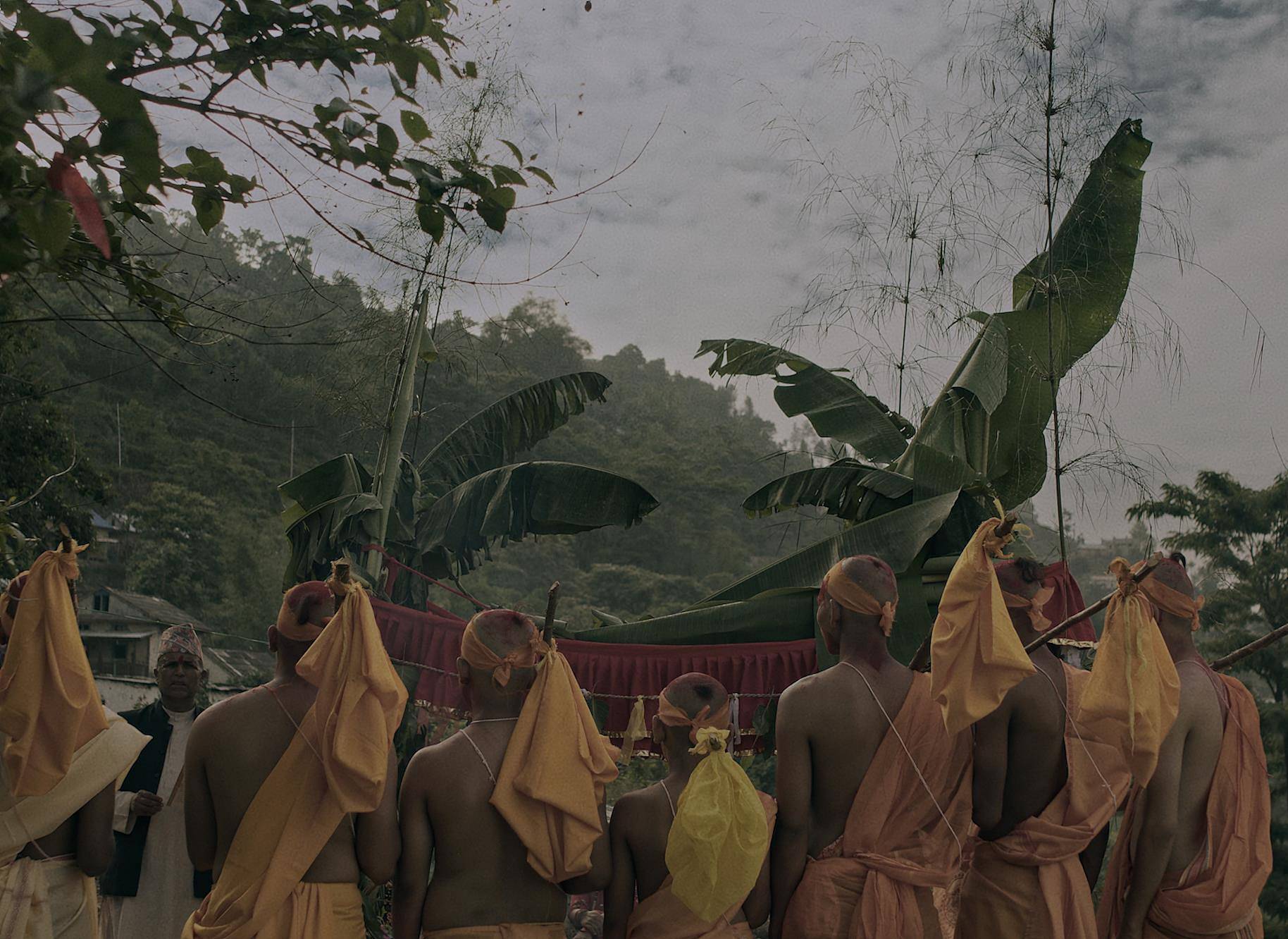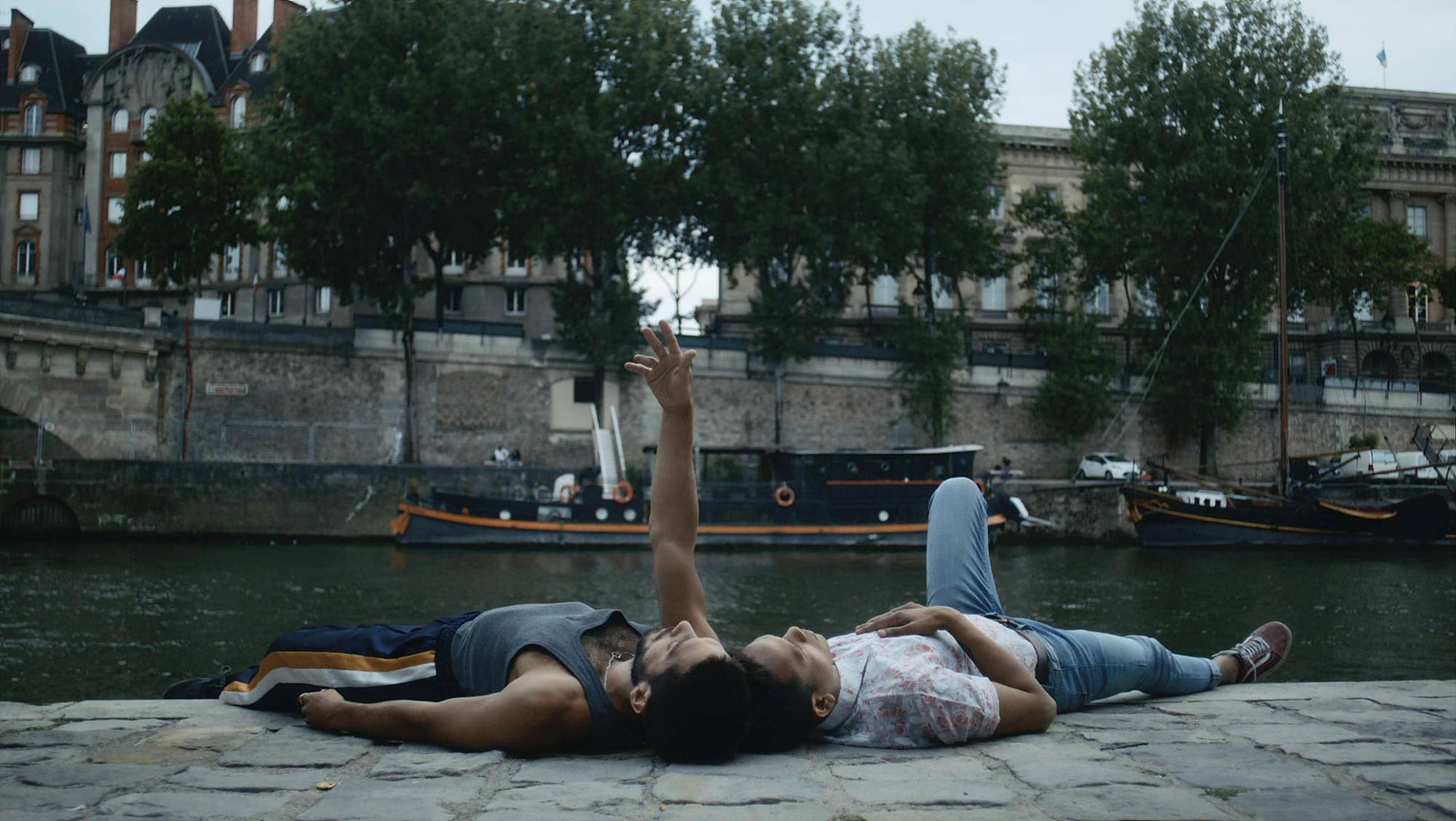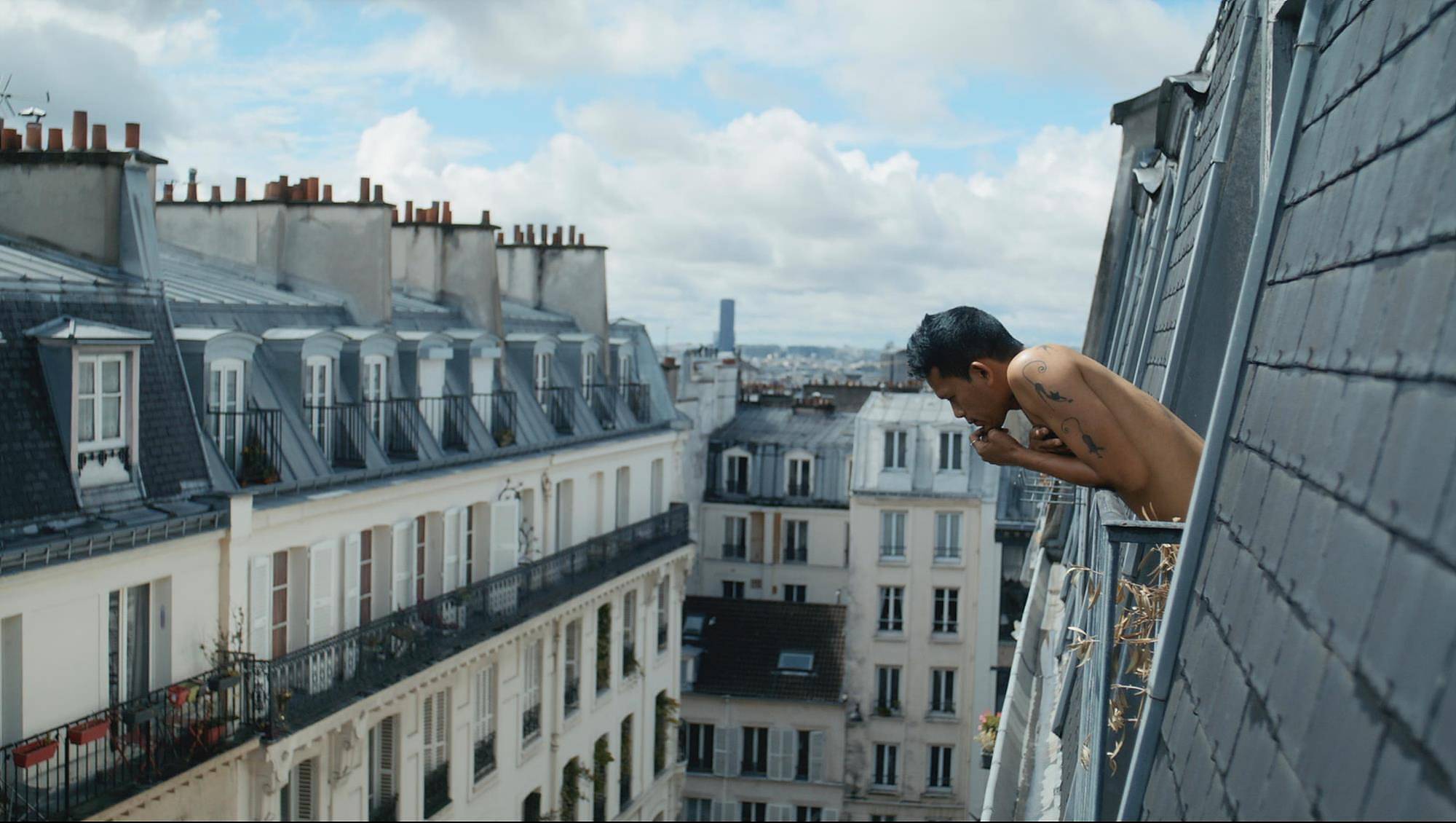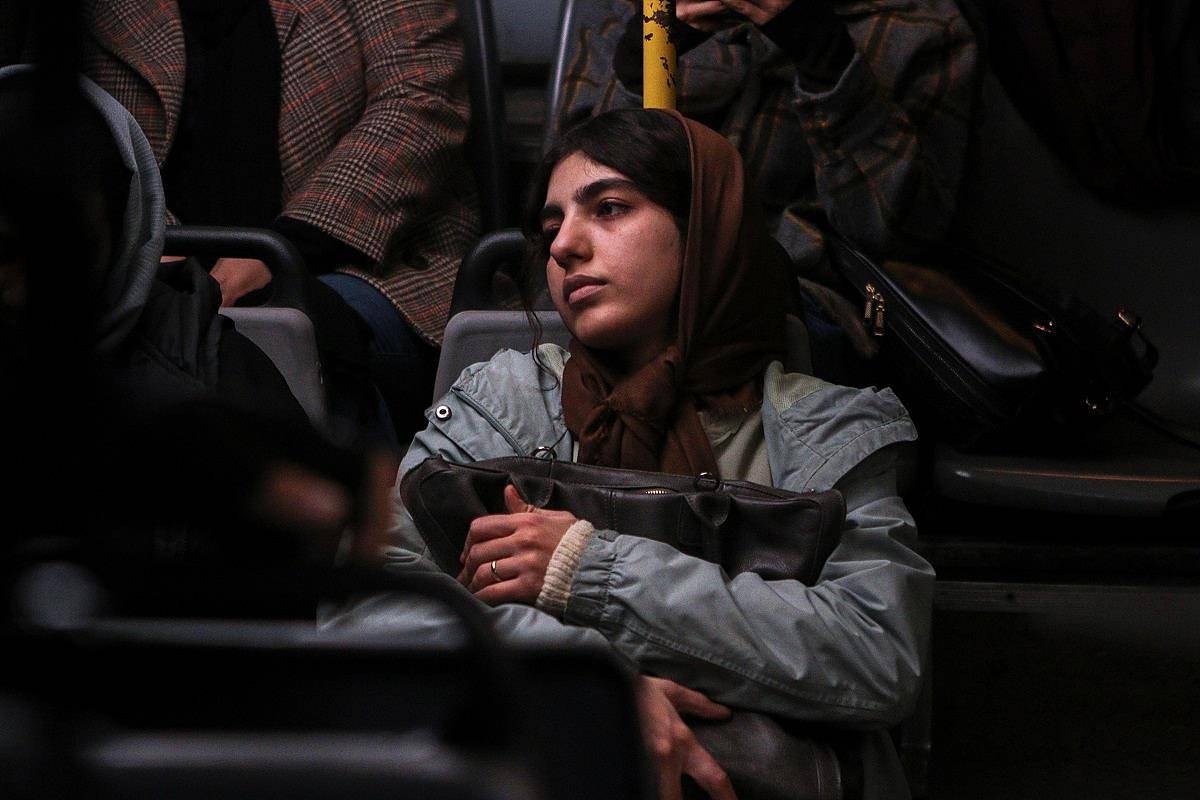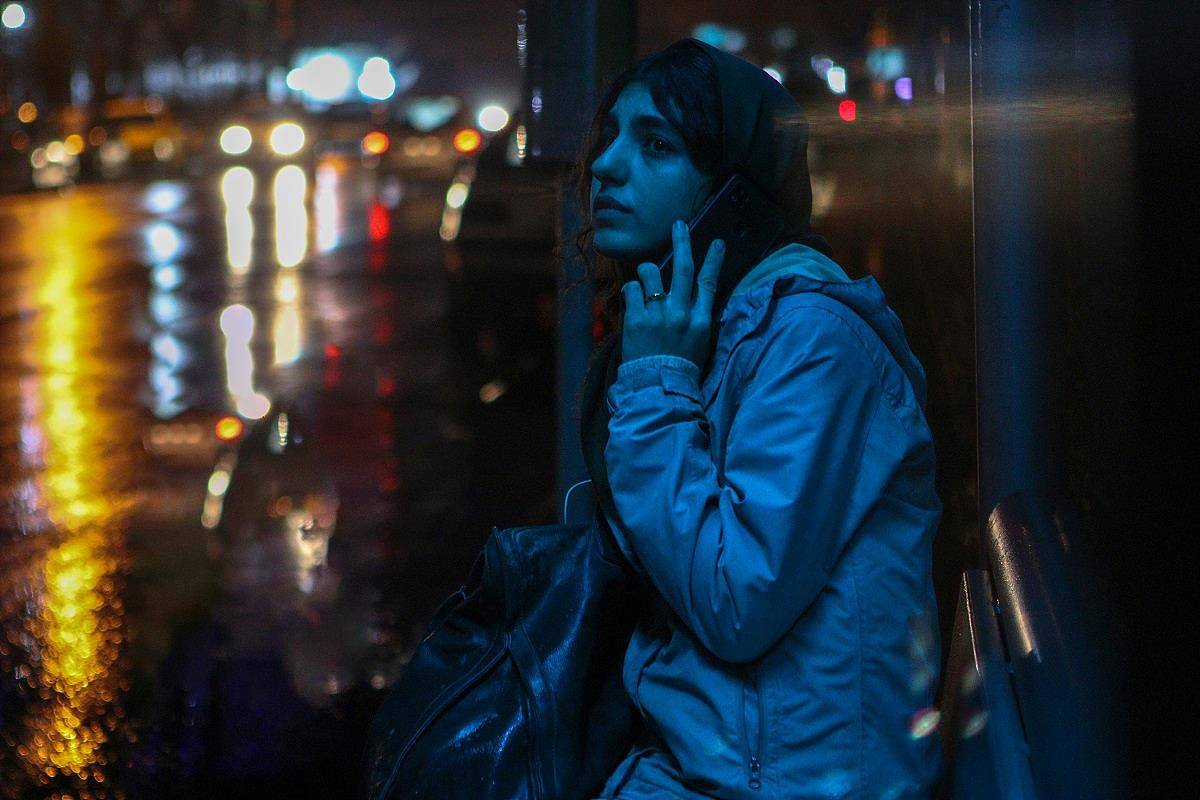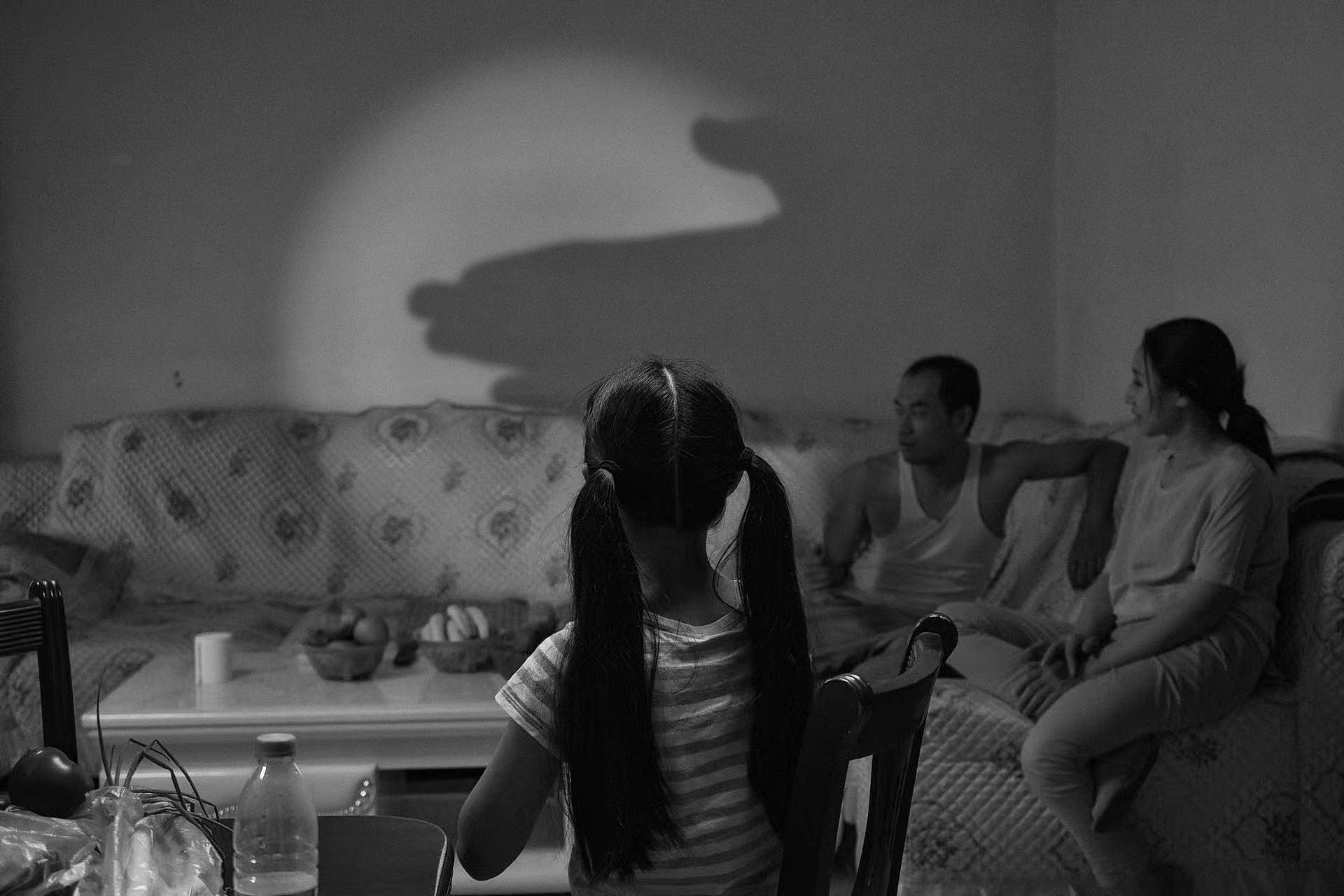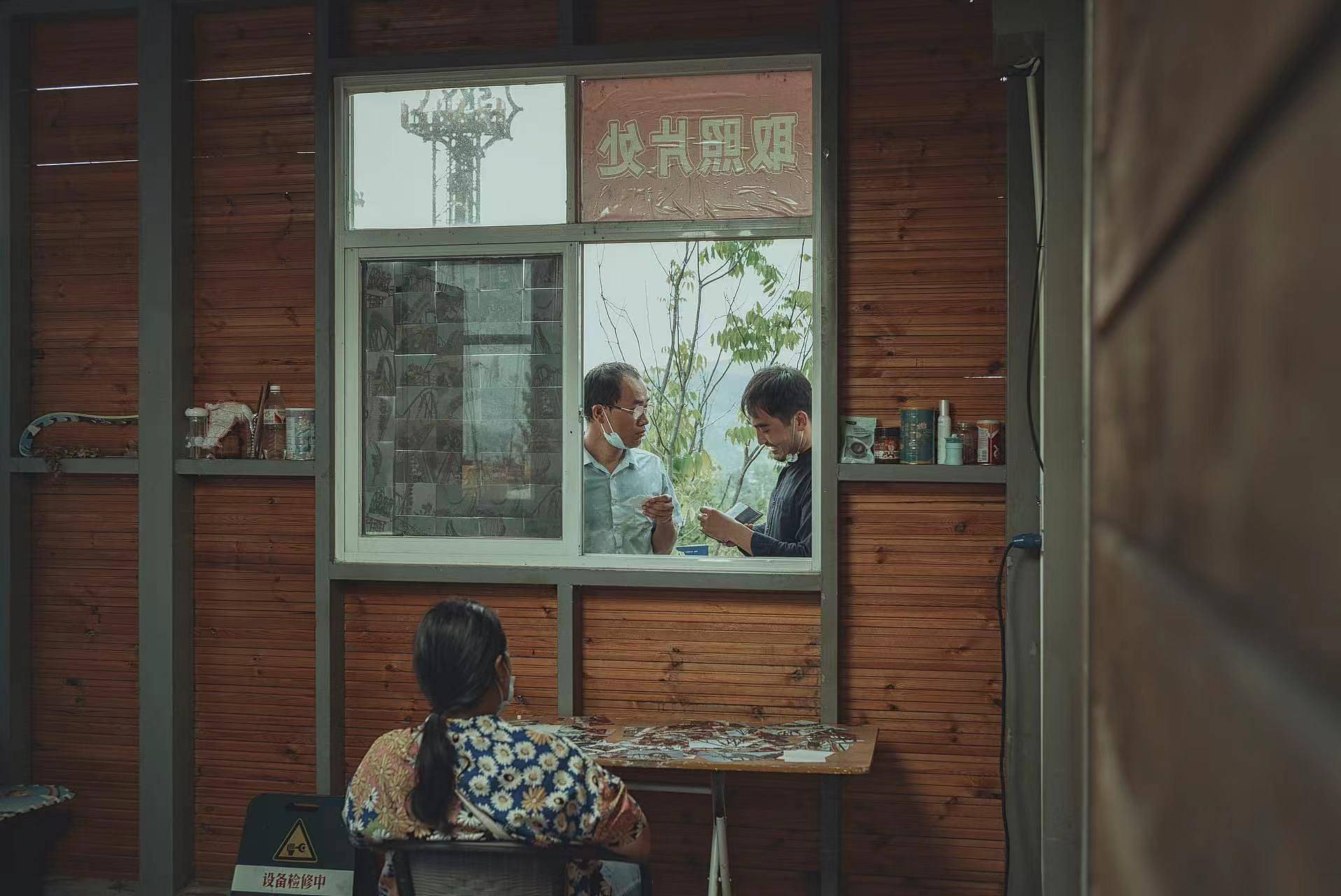BIFF Movie Reviews
BIFF 영화 돌아보기
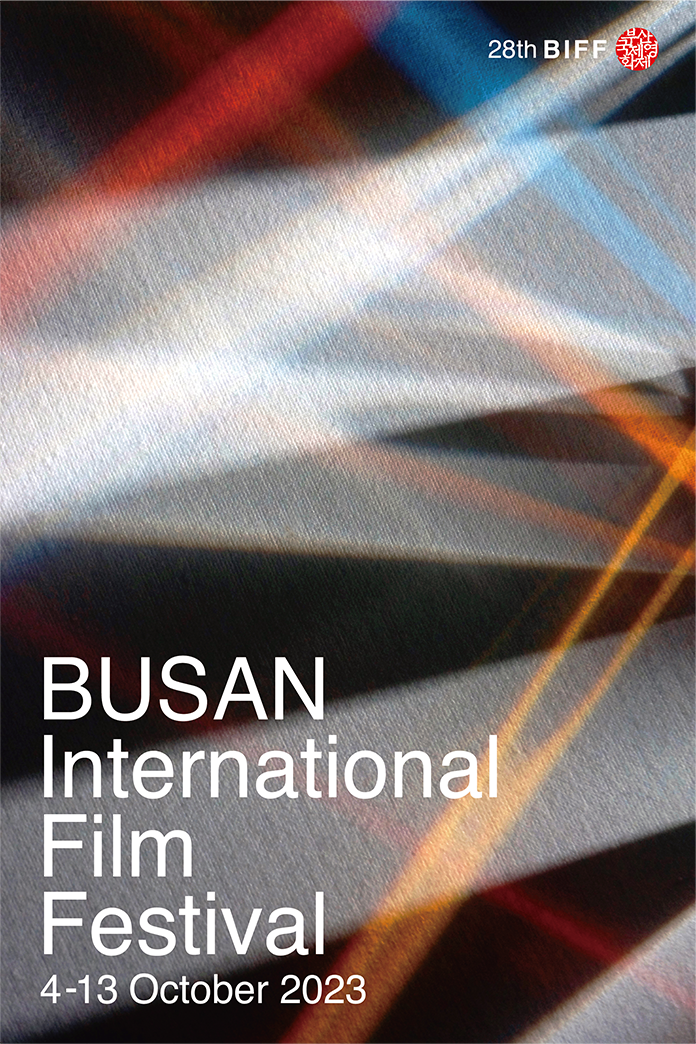
BIFF Movie Reviews
BIFF 영화 돌아보기
Christopher Boyd Tressler
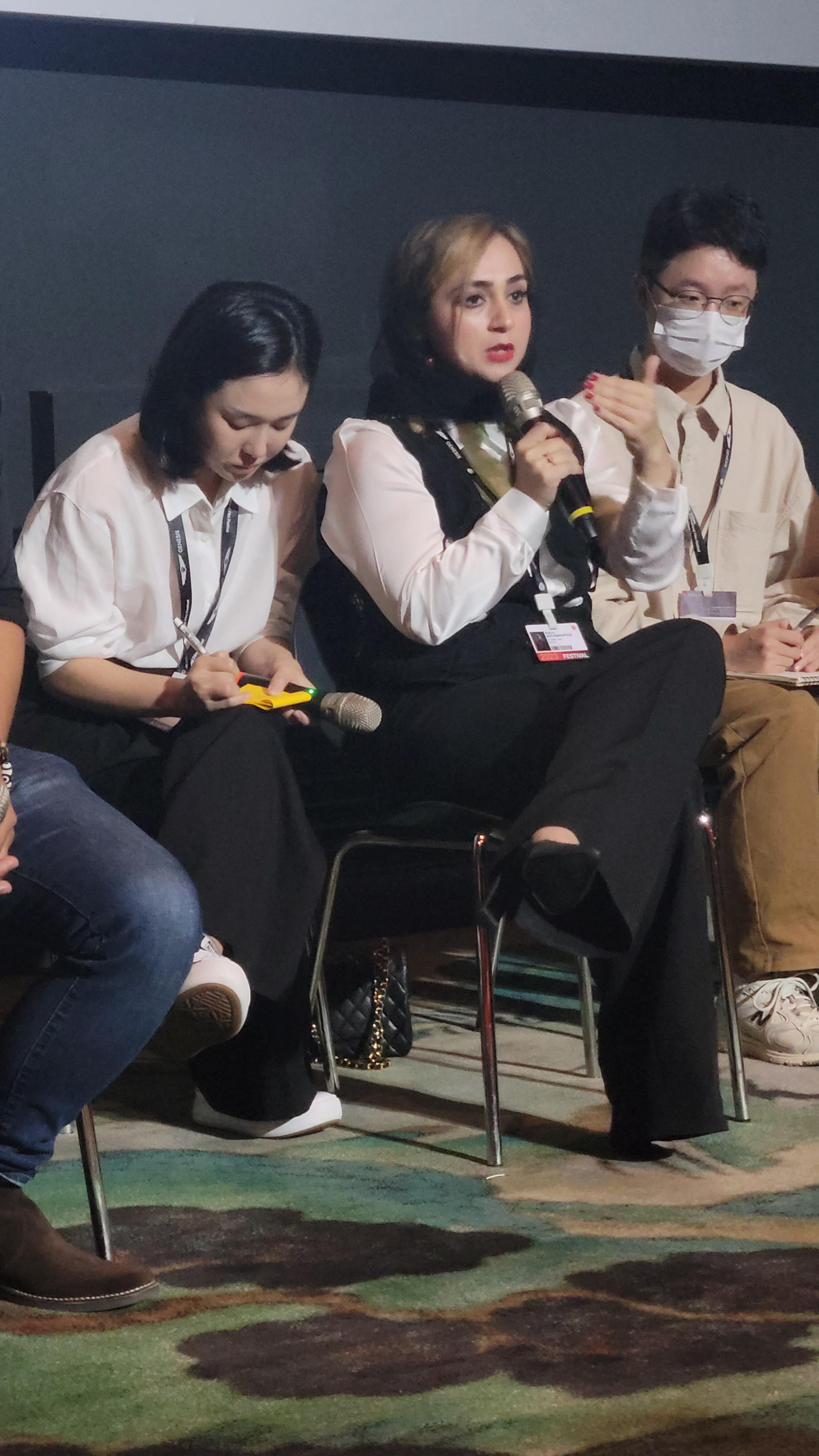
There is little doubt that the Busan International Film Festival has become a staple of the Busan arts scene during its 28-year run. Finding its home at the Busan Cinema Center in Centum City, the film festival stretches to the cinemas at nearby department stores and down to its original location in Nampo. With film makers coming from all over the world and debuting their films in Busan, it is a time to see films that most moviegoers wouldn’t be able to catch. Here is a review of several of the works shown at the festival.
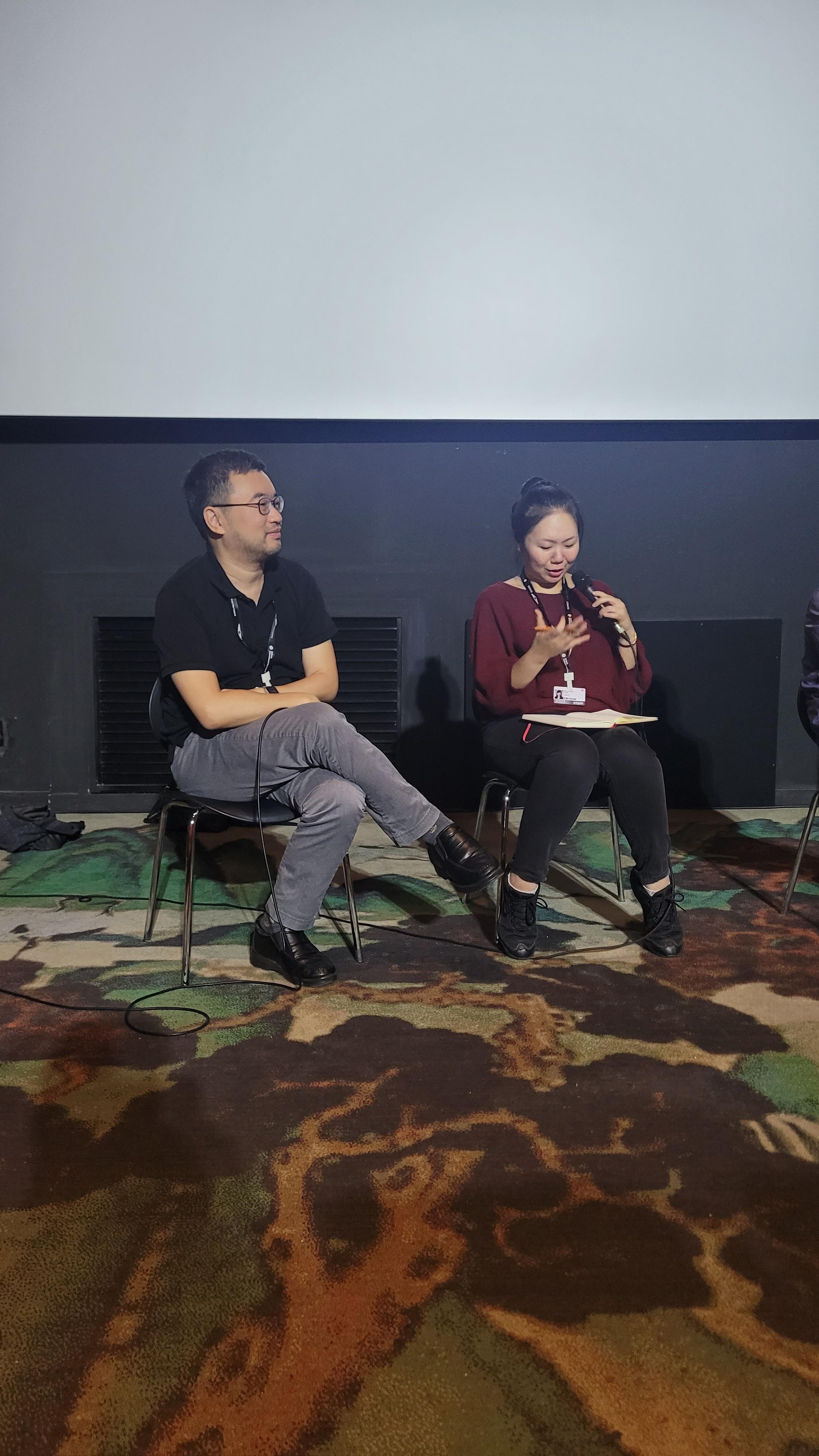
부산국제영화제가 28년간 부산 예술의 중심으로 자리잡았다는 사실에는 의심의 여지가 없다. 영화제는 센텀시티 영화의 전당을 중심으로, 백화점 주변의 영화관부터 본래 장소였던 남포동에 이르는 지역에서 진행된다. 전 세계 영화제작자들이 모여 부산에서 본인들의 영화를 처음 선보이는 부산국제영화제는 대부분의 영화팬들이 볼 수 없었던 영화들을 만날 수 있는 시간이 된다. 이번 영화제에 상영되었던 여러 작품들을 돌아보도록 하자.
Adagio 아다지오★★★☆☆There’s an adage that death comes for us all. The film “Adagio” would better put it that old age comes for us all. Directed by Stefano Sollima and set in a Rome surrounded by wildfires, the film is a realistic portrayal of corruption, gun violence and aging. Following the 16-year-old Manuel (Gianmarco Franchini), the film starts with a touching scene between the boy and his father Daytona (Servilo), who we later learn was the head of a mafia organization, but has long since lost whatever spark he had, along with his mental faculties.죽음은 우리 모두에게 찾아온다는 말이 있다. “아다지오”는 노년기가 우리 모두에게 찾아온다고 표현하는 영화라고 할 수 있다. 스테파노 솔리마(Stefano Solima) 감독은 산불에 휩싸인 로마를 배경으로 부패, 총기로 인한 폭력, 그리고 노화를 사실적으로 그려낸다. 영화는 열여섯 살 소년 마뉴엘(배우 지안마르코 프란키니, Gianmarco Franchini)와 그의 아버지 데이토나(배우 세르빌로, Servilo) 사이의 감동적인 장면으로 시작한다. 아버지는 한때 마피아 조직의 우두머리였으나 그에게 깃들었던 불꽃은 그의 지력과 함께 사라져버린 지 오래다.Through the film we learn about Manuel’s interactions with a corrupt group of police detectives (Giannini, Di Leva, and Franchini) that instruct him to secretly record a politician at a party. After deciding that he wasn’t strong enough to follow through with the instructions, he flees the party and meets up with a former acquaintance of his father. From there he is sent to another gang member while the dust settles.영화를 통해 우리는 파티에서 정치인을 비밀리에 녹음하라고 마뉴엘에게 지시하는 부패한 경찰들(배우 지안니니 Giannini, 디 레바 Di Leva, 프란치니 Franchini)을 만나게 된다. 끝내 경찰들의 지시를 따르지 않기로 결심한 마뉴엘은 파티에서 도망친 뒤 아버지의 옛 지인을 만난다. 이 만남을 통해 마뉴엘은 사태가 진정될 때까지 또 다른 갱단 멤버에게 보내진다.Sollima is an excellent director and sets his world up perfectly. There is a balance in the way our three protagonists (anti-heroes for lack of a better term), are set in juxtaposition with the police who are supposed to make the world a safer place. The setting of a Rome on fire gives us a grim look at the reality that is already besetting our ever-warming world where things like wildfires will cause intermittent blackouts.The violence in the film is not drawn-out and romanticized as it is in most Hollywood blockbusters these days. The gun fights are quick and bloody, a welcome relief to the slog of minutes long gun battles that are as predictable as they are boring. While the ending of the film was obvious from around the halfway mark, Sollima presents characters that are interesting enough to help you overlook the obvious plot points.뛰어난 영화 감독인 솔리마 감독은 그의 세계를 완벽하게 설정한다. 세 명의 주인공(더 나은 용어가 없는 관계로 안티히어로라고 부르자)은 세상을 더 안전하게 만들어야 할 경찰들과 병치되는 방식으로 균형을 맞춘다. 로마가 화염에 휩싸였다는 설정은 간헐적인 정전을 야기하며 이미 뜨거워지고 있는 이 세상을 뒤덮은 암울한 현실을 보여준다.영화 속에 등장하는 폭력은 요즈음 대부분의 헐리우드 블록버스터처럼 그려지거나 낭만적으로 묘사되지 않는다. 총기 전투 장면은 빠르고 피가 튀는데, 응당 지루할 것으로 예상되는 긴 전투 대신 안도감을 준다. 영화의 결말은 중반쯤부터 뻔히 보이지만, 솔리마 감독은 뻔한 줄거리를 잊게 만들 정도로 흥미로운 인물들을 그려낸다.Where Sollima fails in this film, and perhaps it was the point he was trying to make, was in how pointless the actions of every character feel. The young boy flees a party after finding a camera, being reassured by his contact that they put it there and runs.The corrupt detective, who instead of simply retrieving the phone and talking to the gangster that is helping Manuel, comes out guns blazing for no real reason. The gangsters are perhaps the most fleshed out, but in the end their screen time is relegated to Daytona being a doddering fool that is able to show his once sharp mind one time in the film, and Cammello (Pierfrancesco Favino) who dominated his screen time with a powerful performance.솔리마가 이 영화에서 실패한 지점은 아마도 모든 인물들의 행동이 얼마나 무의미하게 느껴지는가를 말하고자 한 것이 그의 요점이라는 사실이다. 어린 소년은 카메라를 발견하고 파티에서 도망치는데, 카메라를 본디 거기 두고 갔다는 연락을 받고 안심한다.부패한 형사는 전화를 되찾고 마뉴엘을 돕고 있는 갱스터와 이야기를 나누는 대신 별다른 이유 없이 총을 쏘아댄다. 갱스터들은 가장 구체적으로 그려지는 인물들이지만 결과적으로 그들이 등장하는 시간은 영화에서 한때 예리했던 정신을 한 번 보여주는 바보 데이토나와 시선을 잡아 끄는 연기로 화면을 압도하는 카멜로(배우 피에르프란체스코 파비노 Pierfrancesco Favino)에게 밀려난다.Yet, perhaps the biggest failing is that the film, proclaimed by the director to be the final in his “Rome” trilogy, presents the characters as if it were the third installment of a trilogy. The mobsters are introduced as former shells of themselves and we are expected to have known them or care about how they end up within minutes of being introduced to them.Perhaps this in an homage to the way Hollywood has presented its never dying action stars that litter the silver screen, but it felt as if it was a hollow attempt to hark back to a previous film glory that many in the audience was not a part of.그러나 이 영화의 가장 큰 실패점이라고 할 수 있는 부분은 감독이 자신의 “로마” 3부작의 마지막 작품이라고 선언한 이 영화 속 인물들이 3부작의 마지막 3부 속 인물들인 것처럼 그려졌다는 사실일 것이다. 마피아는 그들이 한때 입었던 과거의 허물처럼 묘사되고, 관객들이 그들을 오랫동안 알아왔으며 그들의 최후가 어떻게 될지 마음을 써왔다는 것을 전제로 그려진다.아마도 이것은 영화라는 은막을 어지럽혀 온, 헐리우드가 선보인 ‘결코 죽지 않는 주인공들’에 대한 오마주일 것이다. 하지만 이는 대부분의 관객들은 참여한 적 없는 과거의 영광을 되찾으려는 텅 빈 시도처럼 느껴진다.The ending of the film is satisfying enough but at the same time reminds the viewer of the pointlessness of violence, and that there had to have been other, better ways to resolve things. While it was not the best film at the festival, it was not a waste of time and an enjoyable enough way to pass two hours영화의 결말은 충분히 만족할 만 하지만, 폭력의 무의미함과 동시에 상황을 타개하기 위한 더 나은 길이 있었어야 했다는 점을 상기시킨다. 영화제 최고의 영화는 아니었지만 결코 시간 낭비라고는 생각되지 않으며 2시간을 투자하기에 충분히 흥미로운 작품이었다.‘Adagio’ is the fourth feature film by the Italian director and was an official selection in the competition section of the Venice Film Festival.‘아다지오’는 이탈리아인 솔리마 감독의 네 번째 장편 영화로, 베니스 영화제 경쟁부문에 공식 선정되었다.
Talking with RiversThe ListTalking with Rivers 강가에서 / The List 아프간 리스트★★★★☆Those who forget their history are doomed to repeat it. Coming in at 50 minutes the film was pared with his daughter’s selection “The List.” Both films look at the history of Afghanistan and the way it has been treated as a pawn by the superpowers that surround it.자신의 역사를 잊은 사람들은 그 역사를 반복할 운명에 처해진다. 50분 길이의 이 영화는 그의 딸이 선택한 “아프간 리스트”로 이어진다. 두 영화 모두 아프가니스탄의 역사 및 아프가니스탄 주변을 둘러싼 초강대국의 전당포로 취급되는 현실을 보여준다.“Talking with Rivers” is set as a conversation, a contemplative reflection, on the connection between Iran and Afghanistan but also a compilation of the works of the Makhmablaf family. A man sitting at a river, remembering as if in conversation with another, is used as a framing device to connect the other films to this one.Using the films “Kandahar” (2002), “The Day I Became a Woman” (2003), “At Five in the Afternoon” (2003), and “Two-legged Horse” (2008), the film is a reminder of both the tragedies that have befallen Afghanistan, but also that art can be made over generations that is beautiful, meaningful, and full of grace.“강가에서”는 이란과 아프니스탄 간 관계에 관한 대화이자 사색적 성찰이며, 마흐말바프 가문의 작품 모음집이기도 하다. 강가에 앉아 다른 사람과 나눈 대화를 생각하는 듯한 남자는 다른 작품과 이 작품을 연결 짓는 장치로 등장한다.“칸다하르”(2002), “내가 여자가 된 날”(2003), “오후 5시”(2003), “두 발로 걷는 말”(2008)을 활용해 이 영화는 아프가니스탄에 닥친 비극뿐 아니라 세대에 걸쳐 아름답고 의미 있는 우아함 가득한 예술이 만들어질 수 있음을 보여준다.The film looks back to the way Afghanistan was treated by the Soviets, the Taliban, and the United States. It doesn’t pull its punches when looking at the grief and despair that has resulted and takes clips from his previous works and the works of his children to strengthen the story being told.영화는 소련, 탈레반, 미국이 어떻게 아프가니스탄을 대해왔는지 되짚어본다. 그 결과로 겪어야 했던 슬픔이나 절망에 주먹질을 하는 대신, 영화는 감독의 자녀들의 작품에서 영상을 가져와 이야기에 힘을 불어넣는다.The film works perhaps best as a retrospective on the life of a powerful and important filmmaker in Iranian cinema, and a reflection on the political realities of an artist who cannot return to his birth country, and the pain that that has had on his life. While this film is not the strongest or longest of his films, it leaves an impact, especially when paired with “The List” which was directed by his daughter Hana Makhmalbaf.이 영화는 이란 영화계의 한 획을 긋는 감독의 삶에 대한 회고이자 고국으로 돌아갈 수 없는 예술가가 처한 정치적 현실, 그리고 그의 삶을 관통한 고통에 대한 성찰이라고 보는 것이 가장 맞을 것이다. 감독의 작품 중 가장 강력한 감정을 불러일으키거나 최장편으로 제작된 작품은 아니지만, 그의 딸인 하나 마흐말바프 감독의 “아프간 리스트”와 연달아 상영되며 임팩트를 준다.“The List” starts where “Talking with Rivers” leaves off. While “Talking with Rivers” is a dramatic retrospective, “The List” uses real footage from the evacuation of Kabul after US and allied troops decided to finally withdraw. Starting with a chaotic scene in the airport where young men are seen falling to their deaths after climbing onto the outside of a plane, the film follows the saga of her father as he tries to get artists, journalists, and their families out of Afghanistan before the allies leave and they are left to fend for themselves with a government that is more than likely going to kill them.“아프간 리스트”는 “강가에서”가 끝나는 시점에서 시작한다. “강가에서”가 드라마틱한 회고적 작품이라면, “아프간 리스트”는 미군과 연합군이 최종 철수를 결정한 후 카불에서 철수하는 장면을 실제로 보여준다. 젊은이들이 비행기 밖을 기어오르다 추락하는 공항의 혼란스러움을 담은 장면으로 시작해, 영화는 연합군이 아프가니스탄을 떠난 뒤 정부에 의해 죽임 당할 가능성이 높은 예술가, 언론인, 가족들을 아프가니스탄 밖으로 구출하려는 아버지의 발자취를 따라간다.After securing assistance from the French government, the film shows the stress, frustration, and fears of her father Mohsen and other family members as they are met with resistance and roadblocks at every turn. The film is a heartbreaking look at the real effects of the conflict and the danger that extremist governments can put people in.프랑스 정부의 지원을 받은 이 영화는 감독의 아버지인 모흐센 감독과 다른 가족들이 사방에서 몰아치는 저항과 장애물로 인해 겪었던 스트레스, 좌절감, 공포를 보여준다. 분쟁이 실제 삶에 가져오는 현실과 극단주의 정부가 사람들에게 어떤 위험을 가할 수 있는지를 보여주는 가슴 아픈 작품이다.Starting as just a collection of footage for personal recollection, Makhmalbaf decided to compile the clips into a film in the hope that the bravery and compassion of her family and the others who worked tirelessly to get as many of these artists to safety would be remembered. It also is a look at how callous the allies had to be in the final days and how chaotic everything was.그저 개인적인 회고록을 따라 시작한 마흐발바프 감독은 자신의 가능한 한 많은 사람들을 안전하게 탈출 시키려고 끊임없이 노력했던 본인의 가족과 다른 사람들의 용기와 연민이 기억되기를 바라는 마음으로 동영상 클립들을 편집하여 영화를 만들었다. 또한 연합군이 철수 직전 얼마나 냉담해야 했는지, 모든 것이 얼마나 혼란스러웠는지를 보여주는 작품이기도 하다.The film is powerful yet devoid of hope. The countdown to the allies leaving is ever present, and while many of the artists do get out of the country, it is quickly forgotten how many people did manage to get to safety. And, perhaps the best reflection of the stress her father was feeling, the film does not let up for a moment in showing the grief that the power struggle between the US troops and the French Foreign Ministry were having.영화는 강력한 감정을 전달하지만 그곳에 희망은 없다. 연합군이 떠나기 전까지 카운트다운이 계속되는 가운데 수많은 예술가들이 실제로 출국하는 동안 얼마나 많은 이들이 안전하게 탈출할 수 있었는지는 쉽사리 잊혀진다. 감독의 아버지가 느꼈을 스트레스를 가장 잘 보여주는 이 영화는 미군과 프랑스 외무부 사이의 힘겨루기 싸움이 가져온 슬픔을 쉬지 않고 보여준다.While the film reminds the audience of the world’s failings in Afghanistan, it falls into grief fatigue. The lighthearted scenes with Hana’s child do a little to lighten the mood, but the 65-minute run time of nearly constant stress and grief is difficult to watch. In the end the film doesn’t say for certain how many people on the list remained and how many were taken to safety in the west.영화는 세계가 아프가니스탄에 가져온 실패를 상기시키며 긴 슬픔 속에 잠긴다. 하나 마흐발바프 감독의 아이와 함께하는 경쾌한 장면은 분위기를 조금 가볍게 만들어주지만, 65분에 달하는 러닝타임 내내 거의 끊임없이 이어지는 스트레스와 슬픔은 지켜보기 힘들다. 영화 후반부에는 결국 얼마나 많은 사람들이 목록에 남아있는지, 또 얼마나 많은 이들이 안전하게 서쪽으로 이송되었는지는 확실하게 밝혀지지 않는다.
Asian Short Film Competition II / 아시아 단편 경쟁 II
Not all the films shown at the film festival are feature length movies. Among them are short films and episodes from longer tv series. While the films presented for the Short Film Competition are far fewer than presented at the Busan International Short Film Festival, they are still poignant. The Asian Short Film Competition seemed to present the theme of grief with its four films, “The Witness Tree,” “Everybody’s Gotta Love Sometimes,” “21 Weeks Later”, and “Roller Coaster.”
장편영화만 영화제에서 상영되는 것은 아니다. 상영작 중에는 단편 영화와 장편 TV 시리즈 에피소드도 있다. 단편 경쟁 부문 출품작들은 부산국제단편영화제에 출품된 작품 수에 비해 현저히 적지만 여전히 가슴을 뭉클하게 한다. 아시아 단편 경쟁 부문은 “증인 나무”, “누구나 때로는 사랑이 필요하니까”, “21주 후”, “롤러코스터” 네 편의 작품을 통해 슬픔이라는 주제를 보여주는 것 같다.
The Witness Tree증인 나무★★★☆☆The Asian Short Film Competition II started with “The Witness Tree” directed by Niranjan Raj Bhetwal, which begins with a young boy running away after learning the truth about his father from his grandfather.Full of questions and learning that he was born full term after 6 months, that his father might not be his father, and that his father had hung himself from the jackfruit tree in the front yard, the film presents a look at Nepalese culture and a mother who is unable to protect the innocence of her boy.아시아 단편 경쟁 II는 니란잔 라즈 비일 감독의 “증인 나무”로 막을 열었다.영화는 할머니를 통해 아버지에 대한 진실을 알게 된 어린 소년이 도망치는 장면으로 시작한다. 자신이 임신 6개월만에 태어났다는 것, 아버지가 사실은 진짜 아버지가 아닐 수도 있다는 것, 그리고 아버지가 마당의 잭푸르트 나무에 목을 매어 자살했다는 것에 대한 의문으로 가득한 이 영화는 네팔의 문화와 아들의 순수함을 지켜주지 못했던 엄마의 삶을 엿보는 창이다.
Everybody’s Gotta Love Sometimes누구나 때로는 사랑이 필요하니까★★★☆☆The second film of the four comes from director Sein Lyan Tun, a filmmaker from Myanmar, it is set in Paris and titled “Everybody’s Gotta Love Sometimes.” Phyo, a young refugee, dreams of romance with another man.However, he is unable to deal with past traumas that resulted from his experiences as a gay man in Myanmar. The film is a quick glimpse into how unresolved trauma, particularly violent, can come to overwhelm the good intentions of anyone, much less one who is not equipped to deal with them in a new homeland.네 편의 단편 영화 중 두 번째 영화는 미얀마의 세인 라이언 툰 감독이 파리를 배경으로 한 “누구나 때로는 사랑이 필요하니까”이다. 젊은 난민 신분의 피오는 다른 남자와의 사랑을 꿈꾼다.하지만 미얀마에서 게이 남성으로 겪어야 했던 과거의 트라우마가 그의 발목을 잡는다. 해결되지 않은 트라우마, 그 중에서도 특히나 폭력적 트라우마가 어떻게 타인의 선한 의도를 압도하는지를 보여준다. 하물며 새로운 땅에서 그 트라우마에 대처할 준비가 되어있지 않은 사람이라면 더 말할 것도 없다.
21 Weeks Later21주 후★★★★☆The third film, “21 Weeks Later,” by Iranian Director Nasrin Mohammadpour, follows a woman on the way home from getting an abortion at 21 weeks. The girl is shown carrying her guilt, both in the form of her baby whom she tries to find a proper burial place for, and for having the procedure to begin with. The film is both graceful in its 14 minute run, as well as moving.세 번째 영화 “21주 후”는 이란 출신의 나스린 모하마드퍼 감독이 임신 21주차에 낙태 수술을 받고 집으로 돌아가는 여성의 발자취를 따라간다. 여성이 가진 죄책감은 아이를 묻을 만한 매장지를 찾아 헤매는 모습, 그리고 처음부터 그 절차를 시작하는 모습을 통해 보여진다. 14분 간의 러닝타임은 우아하면서도 감동적이다.
Roller Coaster롤러코스터★★☆☆☆The final film of the four, “Roller Coaster” by Chen Xinyang, follows a middle age man, Liang Fei, as he deals with the mental fatigue of a failing marriage, disappointing work, and being stuck in a Covid lockdown during the height of lockdowns in China. The film finds the man riding a roller coaster for the first time with a stranger, even though his wife and daughter are in line in front of him. He spends most of the film in a willful solitary prison of his mind. The film is mercifully brief as Liang Fei is insufferable in his personality and his actions.네 번째 영화는 첸신얀 감독의 “롤러코스터”다. 영화는 중년 남성 량페이가 실패한 결혼생활, 실망의 연속인 직장생활, 그리고 중국에서 코로나로 인한 격리가 절정에 다다랐을 무렵의 정신적 피로감을 그려낸다. 그러던 중 그는 아내와 딸이 앞줄에 서 있음에도 불구하고 낯선 사람과 함께 생애 처음으로 롤러코스터를 타게 된다. 영화 내내 그는 자신의 마음이라는 고독한 감옥에 갇혀 있다. 량페이의 성격과 행동은 참아줄 수 없을 정도지만 자비롭게도 영화의 러닝타임은 짧다.
0 likes 좋아요


